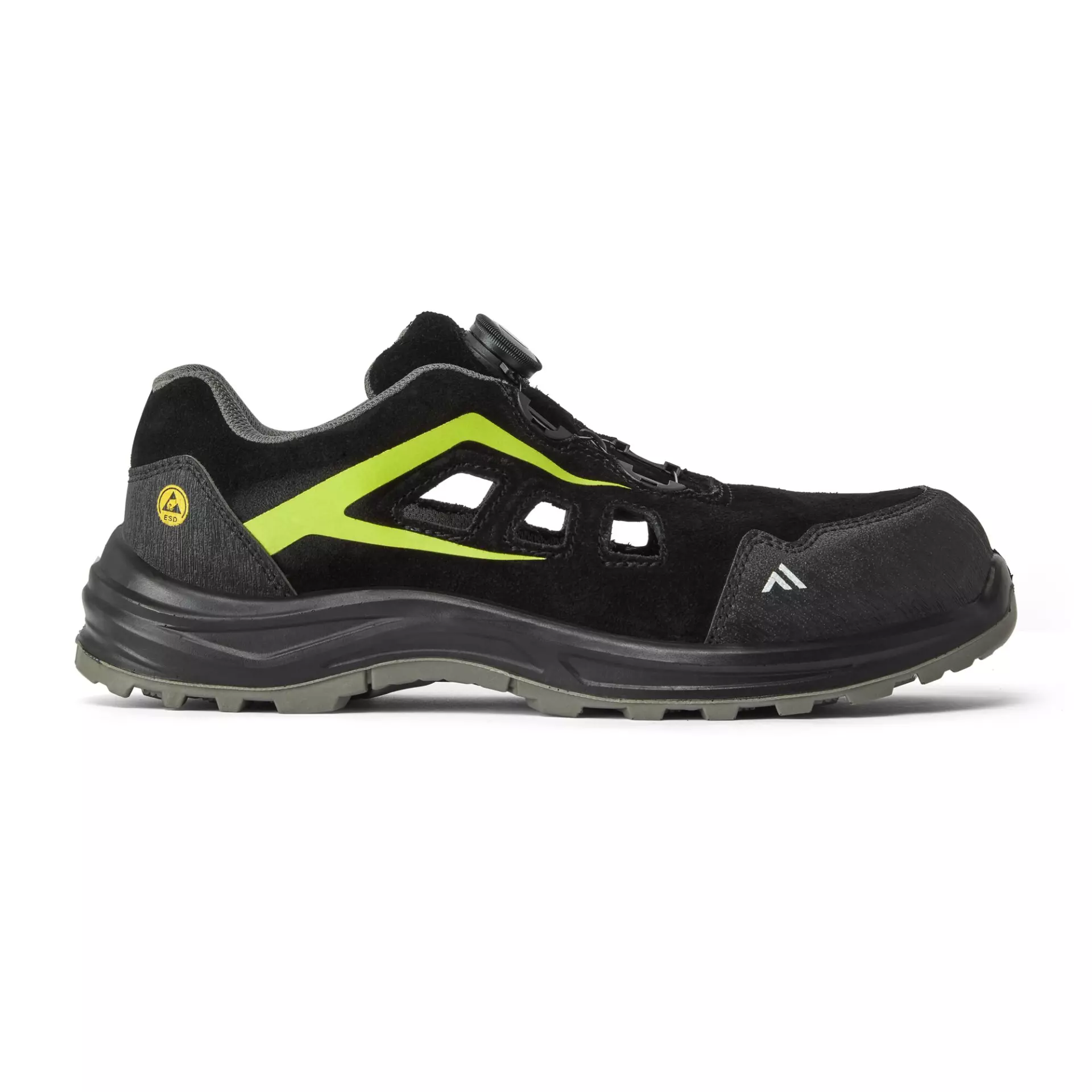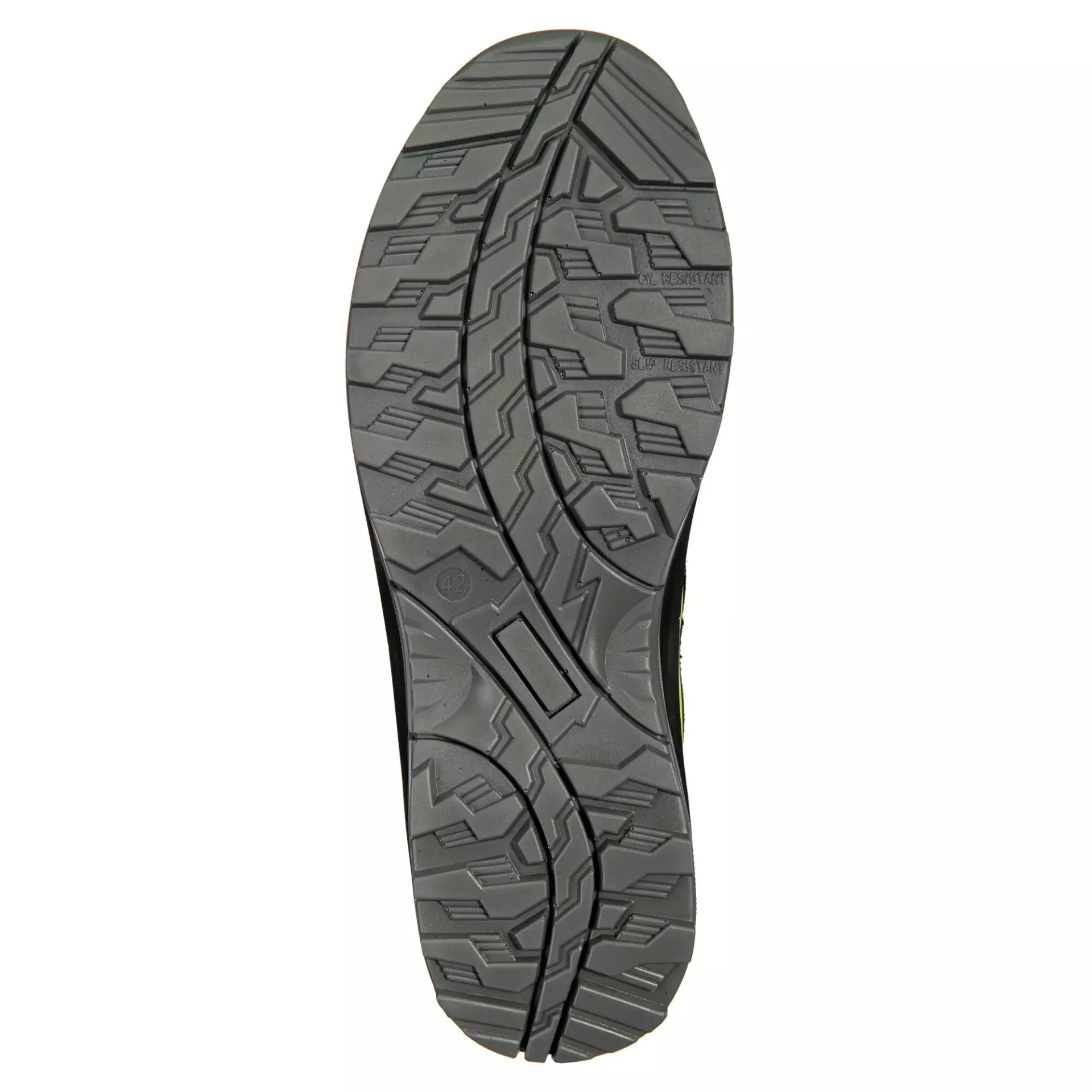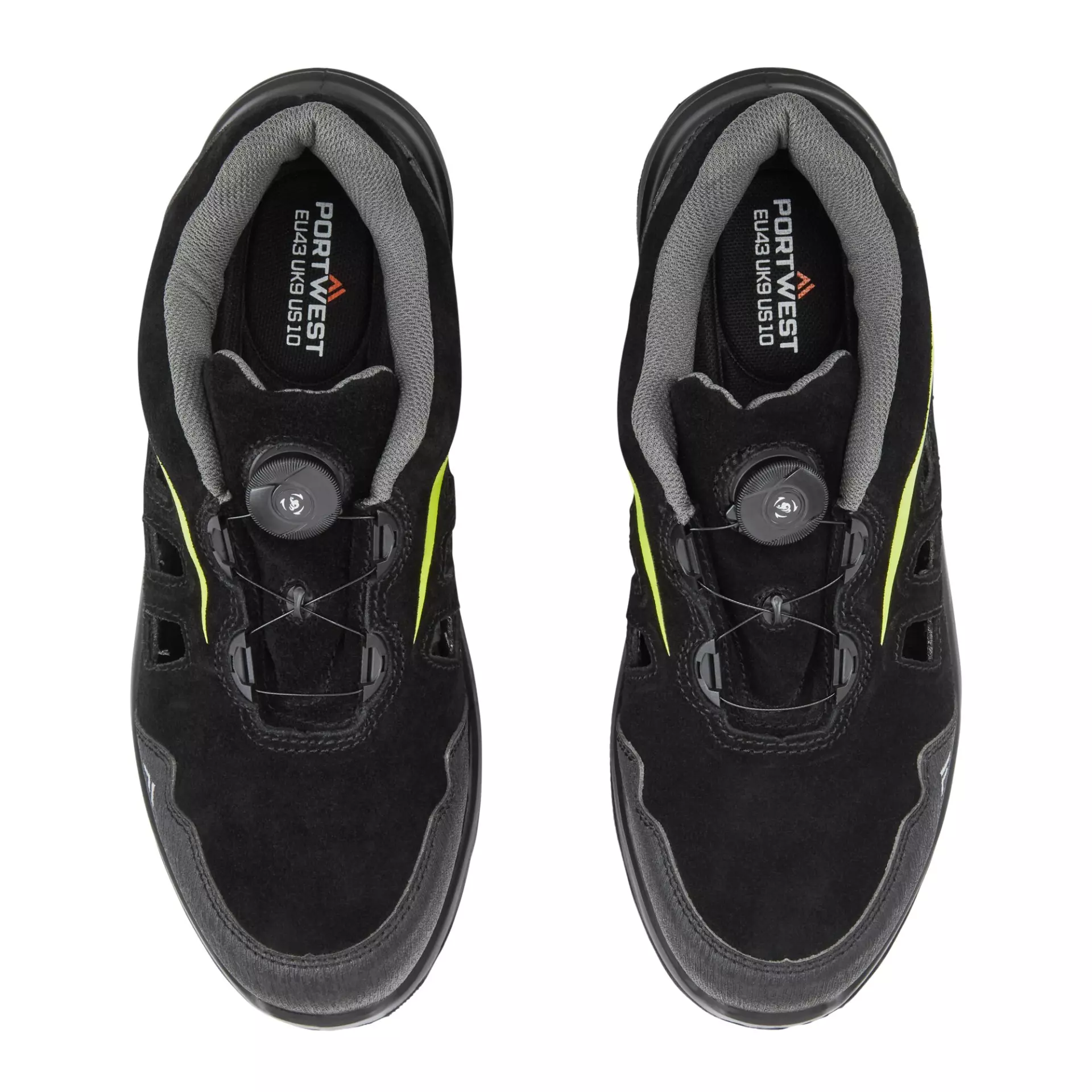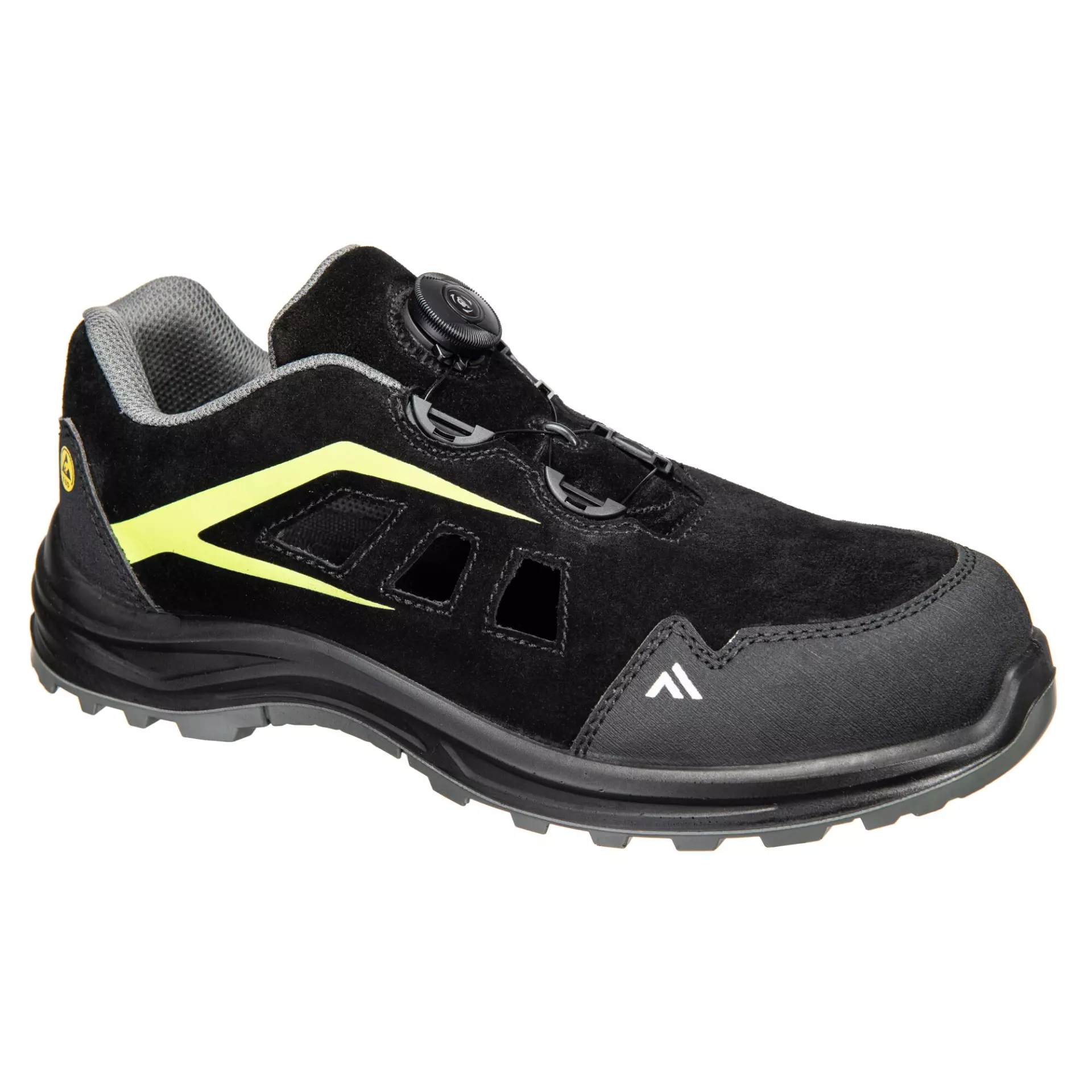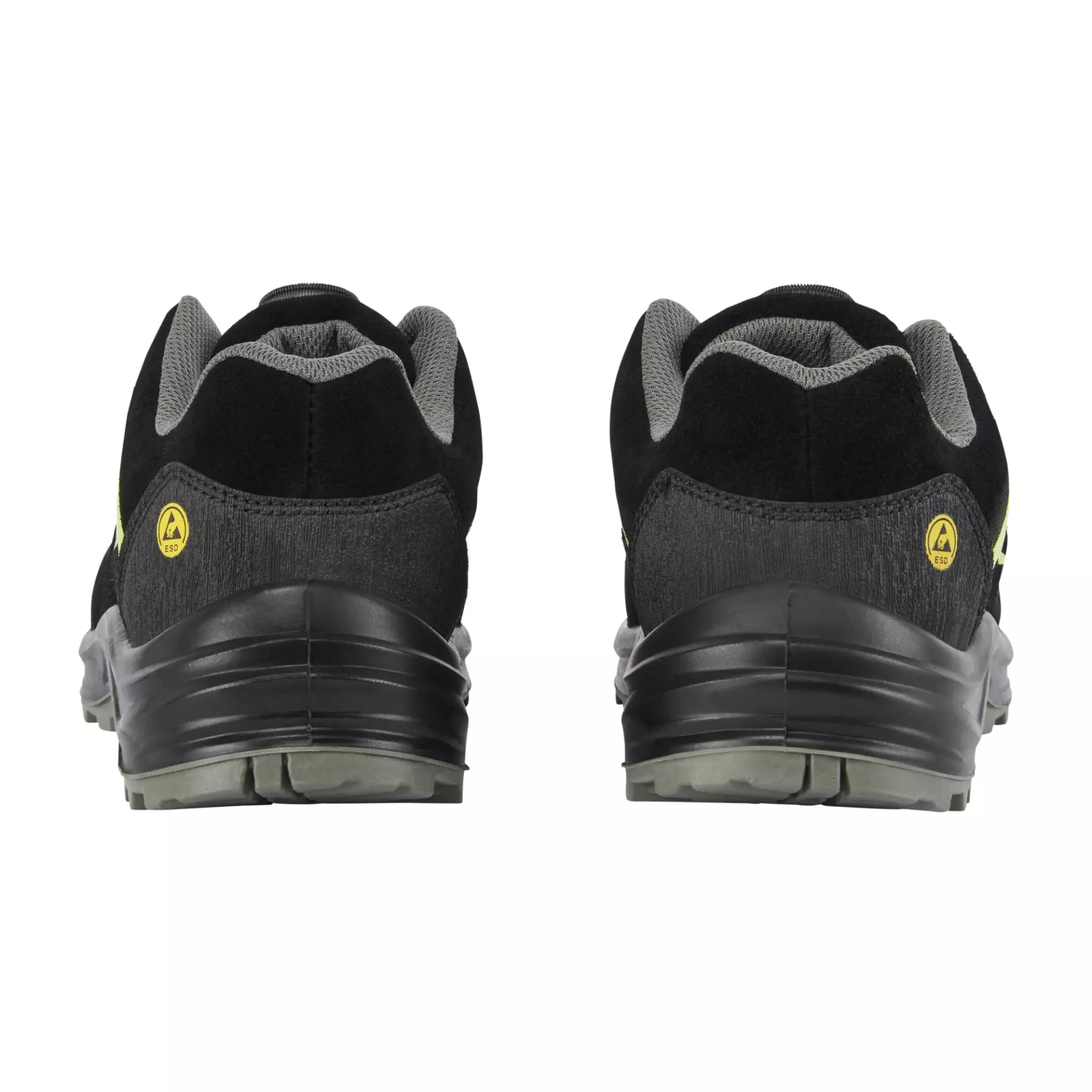Composite Sandal S1 ESD SR FO, Black/Green
5.0 / 5
Product description
This lightweight composite sandal is designed for warm climate applications and ESD environments, featuring suede construction with S1 safety rating. The innovative wire lace system enables quick fastening and release while providing a secure fit, complemented by padded collar and tongue for enhanced comfort. Advanced sole technology includes dual density construction with energy absorption, slip resistance, and fuel and oil resistance properties.
Product Features:
- Quick release wire lace fastening system for secure fit
- Padded collar and tongue for added comfort
- Superbly cushioned comfort foot bed reducing foot fatigue
- Air vents for extra breathability
- Composite toecap for added protection
Technical Details:
- Lightweight suede construction
- Anti-static footwear suitable for ESD environments
- Fuel and oil resistant outsole
- Energy absorbing seat region
- Dual density sole unit with slip resistant outsole
Recommended Applications:
- Warm climate environments
- ESD environments
Standards:
- CE certified
- EN ISO 20345:2022 S1 (ESD SR FO)
- IEC 61340-5-1:2016
About Safety Sandal
Safety Sandals combine essential foot protection with enhanced breathability for hot working environments. Featuring reinforced toe caps and durable soles, these specialized safety shoes protect against workplace hazards while reducing foot fatigue and overheating during long shifts.
- Impact Resistance
- Electrical Protection
- Water Resistance
- Slip Resistant
Standards and labels
Portwest delivery terms
Free delivery when you order more than 300,00 € from Portwest
Supplier shipping fee 4,96 €
Brand minimum 20,00 €
Price available on request
Out of stock
Out of stock
Shipping fee is 4,96 € for orders under 300,00 €
Sold in units of one pair
